
Governments and corporations around the world are adding large scale renewable energy to the power grid. The installations of huge solar and wind farms is growing, taking up large swaths of land. These farms cost hundreds of millions of dollars to install and maintain. They are engineering marvels, promoting a bright future without the pollution of coal, oil, or gas. They are slowly putting an end to the destructive trend of pumping carbon dioxide and other toxins into the atmosphere.
These projects are doomed to abject and total failure with in ten years. Have I got your attention yet?
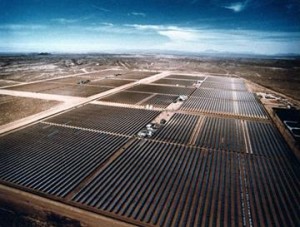
Currently the economies of scale are on the side of large scale renewable energy producers. Bulk purchasing and installation, reduce the initial installation cost of Photo-voltaic, thermal solar, and wind farms. No current home windmill system can match commercial. The cost per watt goes down as the rotor size increases. The commercial cost per watt is well below what the average home owner would pay to have a system installed. The cost for a typical home PV installation is two to five times that of a commercial install. In the future the cost ration between utility scale and home installations is not predicted to change in any significant way.
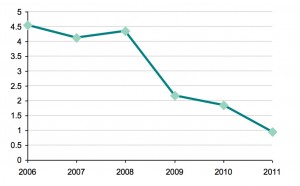 Over the past ten years the cost of PV solar modules has fallen from $18 to under $1 per watt. With the technologies currently being developed, in labs around the world, there is reason to believe this downward trend will continue. The price should reach 25 cents per watt by 2017. The forecast assumes the continued use of the same static flat panel design, that has been used for the past 30 years. If a design like MIT’s vertically zig zagged solar panel is combined extremely cheap, low efficiency (3%-5%) roll-to-roll process photo-voltaic cells. The cost per watt could be substantially lower. Bulk produced, on an automated assembly line, using extruded and injection molded plastic, the costs could be as low as 5 cent per watt by 2017, depending on design and complexity.
Over the past ten years the cost of PV solar modules has fallen from $18 to under $1 per watt. With the technologies currently being developed, in labs around the world, there is reason to believe this downward trend will continue. The price should reach 25 cents per watt by 2017. The forecast assumes the continued use of the same static flat panel design, that has been used for the past 30 years. If a design like MIT’s vertically zig zagged solar panel is combined extremely cheap, low efficiency (3%-5%) roll-to-roll process photo-voltaic cells. The cost per watt could be substantially lower. Bulk produced, on an automated assembly line, using extruded and injection molded plastic, the costs could be as low as 5 cent per watt by 2017, depending on design and complexity.
The cost of energy storage is holding back PV solar based energy solutions. There have been several technologies developed in the past few months that may change that.
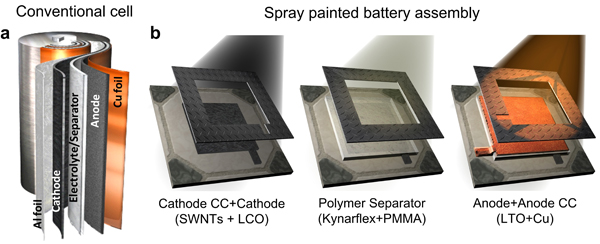 Rice University developed a spray painted lithium ion battery that is simple to produce and can be manufactured in any shape. If you wish to create a cylindrical battery paint it on the outside of a tube. If you want a battery in the shape of an apple print out the layers and stack them. Figuring out how to connect the layers is your issue.
Rice University developed a spray painted lithium ion battery that is simple to produce and can be manufactured in any shape. If you wish to create a cylindrical battery paint it on the outside of a tube. If you want a battery in the shape of an apple print out the layers and stack them. Figuring out how to connect the layers is your issue.
Another interesting development is the development of a silicon spaced graphene battery electrode that can 10x the storage capacity of a lithium ion battery, and increase the lifespan of the battery by a factor of 10. According to the researcher, the technology could be seen in the marketplace in the next three to five years.
If combined these two technologies could potentially reduce the cost of batteries by a factor of 10, with a comparable reduction in battery size and weight. Combined with PV solar cells this technology changes the energy landscape of the planet. Low cost modular PV solar cells with energy storage become become possible. This should happen between 2017 and 2019.
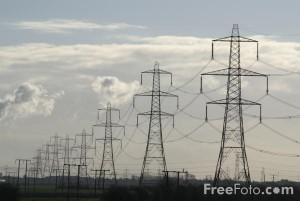
Eventually we will reach a point where the cost to produce and store energy on the large scale and small scale meet. This is very counter-intuitive, until you realize that it takes years and tremendous capital outlay to build a large scale multi-megawatt solar farm, and a few thousand dollars and a couple hours or days to install a home system.
While the large scale producer is spending time and capital on a complex build out, the consumer already has a system installed. Even with continuously decreasing PV solar prices the large scale provider will still be running at a loss.
This is where the large energy producers strength, becomes their greatest weakness. The infrastructure they need to deliver energy to consumers. The cost of customer billing, meter reading, infrastructure construction, and maintenance, all become a severe drain on their once profitable business model. When the cost to create and deliver energy, is higher than the cost for a consumer to produce the energy themselves, the business of large scale energy production fails.
We are already at the beginning of this disruptive trend in Europe. Germany today has 25 gigawatts of consumer installed PV solar pumping energy into the grid. This has reduced the German daytime energy prices significantly. <click – (You really have to look at the before and after charts) Once prices drop on PV solar and energy storage, wide scale adoption is likely to occur. The bankruptcies of the least efficient and most leveraged energy producers will occur first, followed by the rest. My numbers say, this should start in the US around 2017 and end around 2025.
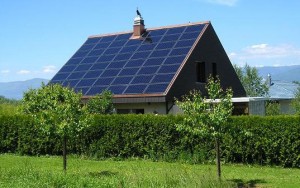
This trend will remove energy as a commodity and replace it with energy generation as the commodity. Between advancements in engineering and competition the cost per watt should fall until the underlying commodities prevent any further decline.
In the end it becomes buy once, remove the middle man, don’t pay for energy, use the system for 30 years, then replace it with a system with an even lower total cost of ownership and longer lifespan.
It is only a matter of time before it is more cost effective to generate you own energy, rather than buy it off the grid.
Perhaps I should have titled this article, “how the worlds energy companies will perish”.
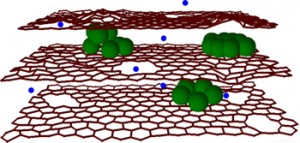
What’s wrong with methane synthesis for storage? http://talknicer.com/co2extraction.pdf proves it’s less expensive than fracking with nighttime wind, and you can use the existing natural gas pipeline net and you only have to capture from plant effluent stacks. Airfuelsynthesis.com and windfuels.com are busy commercializing it.
Also, I think you’re overly optimistic about solar. It won’t cost less than wind until about 2020, because wind is falling in cost as turbines keep scaling up and go high altitude, too. The dashes on http://j.mp/globalwind are 95% confidence intervals from a simple exponental extrapolation.
There are a dozen technologies coming down the pipeline that will reduce the cost over the next 5 years. For silicon we are now beginning to catch up on the technology and cost curve that was broken during the silicon crunch a few years back. The economies of scale coming into play in Chinese silicon plants show that the cost projections from the US government are wrong.
Energy storage is the problem at this point. With technologies like methane synthesis and hydrogen we have the potential to solve any energy issues permanently. They are inefficient for storage and we are just a few years from an energy glut where storage efficiency doesn’t matter.
The reason I have my bet on solar is mass per megawatt. Paper thin, 10% efficient solar cells, will cost less to produce than mile high wind turbines.
Perhaps. In some areas, there is enough cloud cover to make reliance on solar power problematic.
That said, I’ve considered the lower efficiency units for my home, the solar shingles that are currently available. I’m just waiting for the price to drop a bit more, then I’ll see about setting up storage and an inverter (probably house them in our large, detached garage).
Could we be nearing the end of the age of scarcity?
“Perhaps. In some areas, there is enough cloud cover to make reliance on solar power problematic.”
You mean like Germany? Oh wait, they are seriously invested in solar and its working for them … 😉
I’m in SE Pennsylvania. During the winter, we get a fair amount of cloud cover that makes solar power a bit problematic.
Then, there’s snow.
Of course, reliance upon ONE power generation technology isn’t a good idea. One should have multiple methods of generating power.
For New Jersey, one could utilize wind, solar (I’ve noticed some solar panel farms in the state already) and wave generation from the ocean.
But, the developers at the beach wouldn’t like to lose a small part of the coastline. :/
After the last two storms … what coast line? 🙂
All energy on the planet is nuclear, stored thermal, gravitation-ally induced, or a by product of solar. Eventually we will get to 60% efficient solar cells that are inexpensive with low cost energy storage. Just the average rooftop will be enough to power the house and the cars.
True. Fortunately, many types of wave energy generation equipment is below the surface.
As I recall, the UK has been experimenting with it quite a bit. France and Germany have also been working on the technology.
Thank you a lot for sharing this with all of us you really realize what you’re speaking approximately!
Bookmarked. Kindly additionally consult with my website =).
We may have a hyperlink trade arrangement among us